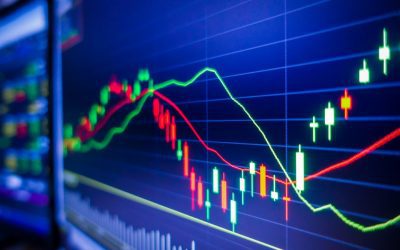Market cycles are a natural part of investing, but deep drawdowns can have a lasting impact on portfolio growth—especially for retirees and those nearing retirement. Understanding the historical patterns of market declines and recoveries is crucial for managing risk and preserving wealth.
 |
Most Retirees Need to Allocate to Equities to Achieve Their Target Retirement Return
To maintain purchasing power and sustain withdrawals throughout retirement, most retirees need to generate a return that outpaces inflation. A simple way to estimate this target return is by using the build-up method:
Inflation: Historically, inflation has averaged around 3% per year, meaning retirees must at least match this rate to preserve their standard of living.
- Growth Target: To fund long-term spending needs and sustain portfolio longevity, a reasonable real return goal is 4% above inflation.
- Total Target Return: Combining these factors, retirees would aim for an approximate 7% total return over time.
Achieving this return often requires an allocation to equities, as fixed-income investments alone may not provide sufficient growth. However, investing in equities introduces market cycle risks, making risk management essential to avoid deep drawdowns that could jeopardize long-term financial security.
 |
Bear vs. Bull Markets: Defining the Cycle
Market cycles move through periods of expansion and contraction, commonly referred to as bull and bear markets.
- Bear Market: A decline of 20% or more from a market high. Bear markets typically last 9-18 months, with deeper recessions taking longer to recover.
- Bull Market: A rise of 20% or more from a market low, signaling a recovery phase. Historically, bull markets last much longer than bear markets, averaging several years of upward growth.
- Understanding these definitions helps investors recognize where they are in the cycle and make informed decisions about risk management.
 |
The Reality of Market Drawdowns
A drawdown refers to the decline from a market peak to its lowest point before recovery. While downturns vary in severity, historical data provides key insights:
- Average Market Decline: The S&P 500 experiences annual corrections of 14-15% on average.
- Bear Market Drops: More severe downturns (20% or more) occur approximately every 3-4 years, with an average decline of 30-35%.
- Worst-Case Scenarios: Major downturns, such as the Great Financial Crisis (-57%) or the COVID crash (-34%), can take years to recover from.
 |
The Recovery Phase: How Long Does It Take?
Recoveries tend to take longer than declines, making deep drawdowns particularly damaging.
- Average Bear Market Length: 9-18 months
- Average Recovery Time: Typically 1-2 years, but deeper recessions can extend to 4-5 years or longer.
- Sequence Risk for Retirees: Withdrawing funds from a portfolio during a major drawdown can permanently impair its longevity.
 |
Avoiding Deep Drawdowns
Rather than riding out severe downturns, sophisticated investors implement strategies to minimize their impact:
- Risk-Managed Asset Allocation: Adjusting equity exposure based on market conditions can help mitigate large losses.
- Dynamic Hedging & Defensive Strategies: Tactical risk management approaches, such as trend-following or alternative investments, can reduce downside exposure.
- Income Stability Planning: Structuring a portfolio to ensure steady income sources (e.g., annuities, bonds, or cash reserves) reduces the need to sell assets at a loss.
The Key Takeaway
Market downturns are inevitable, but deep drawdowns don’t have to derail your financial future. By proactively managing risk and positioning portfolios for resilience, investors can preserve their wealth and maintain financial stability through market cycles.
At Vantedge Wealth Management, we specialize in risk-managed investment strategies designed to help you avoid excessive losses while keeping your long-term goals intact. Contact us to learn how we can help safeguard your retirement portfolio.






